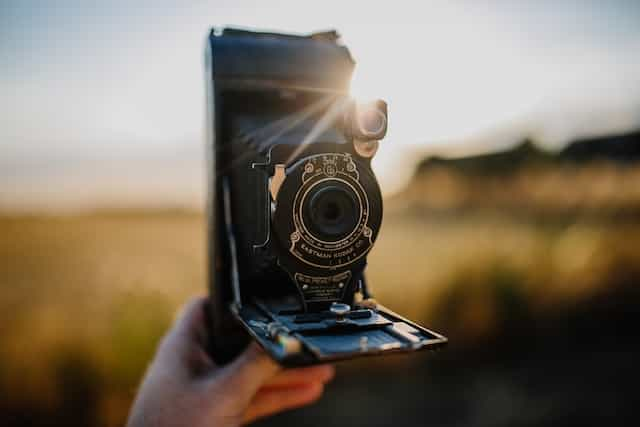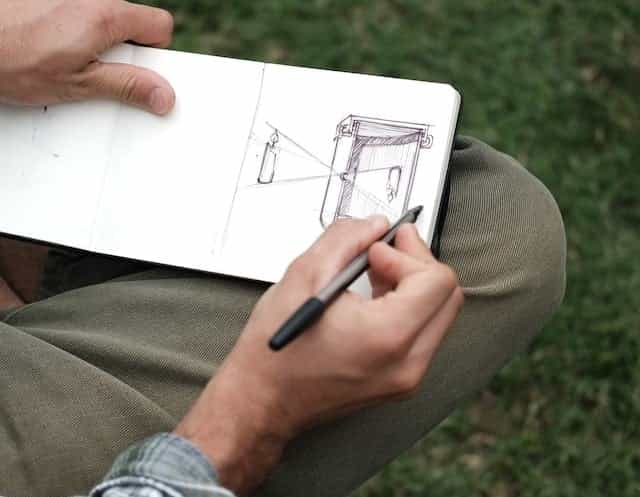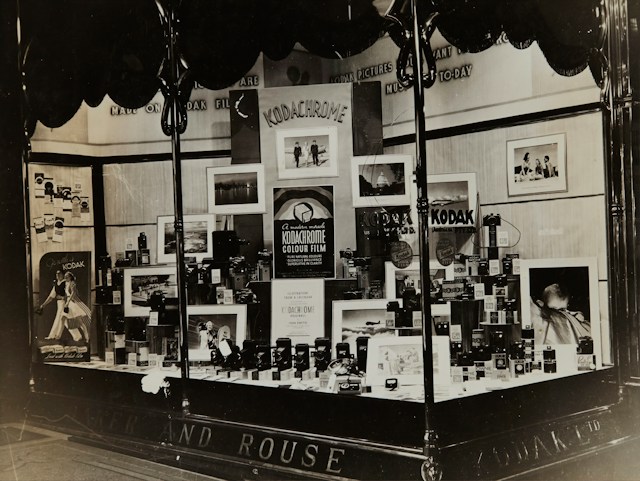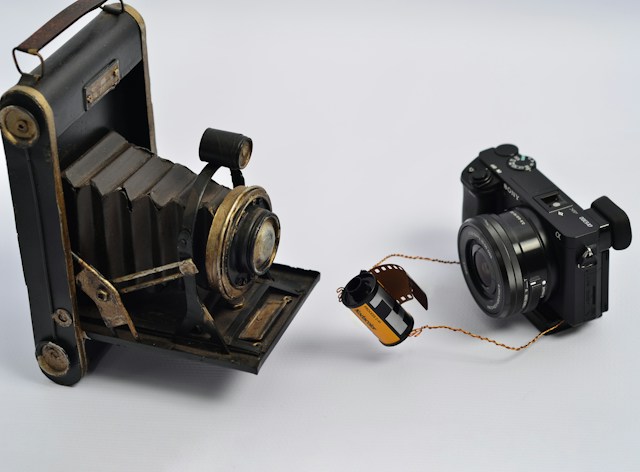The 📸 Press Clipping by Fair Licensing | week 35 '23
Here are the top 5 news articles for Agencies and Photographers in week 35/2023
When was the first camera invented? When was the first photo in the world ever taken? Explore the highlights of the history of photography in this article.
Photography, a medium that allows us to freeze moments in time, has a rich and fascinating history. Understanding the history of photography is crucial for a comprehensive appreciation and mastery of this art form. Let's embark on a journey through the key milestones that shaped the art of photography.
The discovery of photography is a fascinating journey that spans centuries, involving various figures from philosophers to alchemists. Approximately 150 years ago, humanity achieved the groundbreaking ability to capture images with light, giving birth to photography. In this piece, we'll address essential questions regarding the evolution of photography:
1. Key photography innovations: Overview
2. How and when was photography invented?
3. When was the first photograph taken?
4. When was the first camera made?
5. When was color photography invented?
6. When did digital photography start?
7. When was the first camera phone made?
8. Early photography and the origin of Copyright
9. Other Interesting facts from photography history
Before delving into a bit more detailed history of photography, let's outline key highlights and major developments in this scientific art form:
Camera Obscura (5th century B.C.): Before the invention of the camera, the camera obscura—a darkened room or box with a pinhole opening—projected hazy images onto walls or screens, providing an early glimpse into the outside world.
Photochemistry (18th and 19th centuries): Johann Heinrich Schulze's discovery in 1725 that silver salts darkened in light paved the way for Joseph Nicéphore Niépce's 1827 use of a camera obscura and light-sensitive Bitumen of Judea to capture the world's first photograph.
Daguerreotype (1837): French inventor Louis Daguerre, in collaboration with Niépce, improved photography in 1837 by using iodized silver plates exposed to light and developed with mercury fumes. This innovation produced sharper images in a shorter exposure time.
Flexible Roll Film (1884-1889): George Eastman's introduction of film on rolls in the mid-1880s revolutionized photography, making it accessible to amateurs. The lightweight and resilient roll film allowed for multiple quick-succession shots, becoming the standard for nearly a century.
Autochrome (1907): The Lumiere brothers' Autochrome, introduced in 1907, marked a breakthrough in color photography. Utilizing dyed potato starch grains, they created vivid images. Although eventually replaced by Kodachrome in 1935, Autochrome was a significant step towards achieving color in photography.
Photography originated as scientists explored optics and chemistry, discovering light-sensitive materials that darken when exposed to light. In 1717, Johann Heinrich Schulze observed silver nitrate darkening but couldn't fix the image.
Thomas Wedgwood (1771-1805) experimented with silver nitrate-coated paper, contributing to early photography. In the 1790s, James Watt noted Wedgwood's attempt to use a camera obscura for real-world scenes but with limited success. Despite capturing silhouette images called photograms, Wedgwood lacked a method for permanence.
The true birth of photography occurred in 1839 when Louis Daguerre and William Henry Fox Talbot introduced daguerreotype and calotype processes, respectively. Daguerre's method, using silvered copper plates, became the commercial standard until the 1850s. Talbot's calotype process, utilizing paper negatives for mass reproduction, laid the foundation for future photography.
In 1851, Frederick Scott Archer introduced the collodion process, dominating wet-plate photography until the 1880s. Despite challenges like volatility, it significantly reduced exposure times and enabled portable darkrooms.
The quest for convenience led to the dry-plate technique introduced by Richard Maddox in 1871 , offering flexibility and eliminating the need for coating plates. Dry plates, stored and developed at leisure, marked a major advancement.
The subsequent innovation of film in the 1880s, notably Kodak company, revolutionized photography. The invention of flexible film in the 1880s by the Kodak company, led by George Eastman, marked a significant breakthrough. The introduction of the Kodak camera allowed users to take up to 100 photos before changing the film, making photography accessible to a broader audience.

Photo by Phil Hearing from Unsplash
Oskar Barnack's 1913 prototype for a compact 35mm camera, later produced as the Leica in 1925, further popularized 35mm film.
Despite the availability of cameras and film, the film development and photo printing process remained laborious. In 1947, Edwin Land, the founder of Polaroid, showcased the first instant camera to the Optical Society of America in New York City. A year later, instant cameras became widely available.
.jpg?quality=low&width=1920&height=1281&name=annie-spratt-FPSOigqOMxE-unsplash%20(1).jpg)
Photo by Annie Spratt from Unsplash
In 1822, the French inventor Joseph Nicéphore Niépce achieved a groundbreaking milestone in the history of photography by creating the first permanent photograph. Regrettably, Niépce's earliest works have been lost, but he is recognized for producing the oldest surviving photograph in 1826.
Niépce is widely acknowledged as the pioneer of photography. He utilized a camera obscura to capture and project an image onto a polished pewter sheet. Before use, he coated the pewter plate with a light-sensitive substance, allowing it to dry.

Photo by Studio Crevettes from Unsplash
Niépce exposed the camera for an extended duration to enable the hardening of the light-sensitive material. Subsequently, areas unexposed to light were left unset and could be removed using solvents, resulting in a positive image. However, the plate required illumination for viewing.
After extensive experimentation, Niépce achieved the creation of permanent images from nature, labeling his process 'héliographie,' meaning 'drawing with the sun.' His earliest surviving image captures a courtyard at his residence in Saint-Loup-de-Varennes, France, recorded on a pewter plate coated with bitumen of Judea, a light-sensitive compound.
Despite Niépce's pioneering efforts, recognition eluded him in his lifetime, and he died in obscurity in 1833. It wasn't until 1952 that photo-historian Helmut Gernsheim discovered and confirmed the image stored in a London warehouse as the world's first photograph.
The story of the camera's invention involves various inventors and innovations. The camera obscura, a precursor to modern cameras, emerged around the 4th century BCE. This dark room with a small hole projected an inverted image of external surroundings onto its wall. In the 16th century, rudimentary lenses improved image sharpness, leading to portable versions by the 17th century.
Joseph Niépce's innovative use of a camera obscura in the early 19th century marked a transformative advancement. While camera obscura images were visually captivating, Niépce's invention enabled the permanent capture of these images, a significant breakthrough in photography.
Nevertheless, this is Louis Daguerre, associated with the daguerreotype process, is often linked to the development of the first practical photographic camera. French inventor Louis Daguerre, in collaboration with Niépce, improved photography in 1837 by using iodized silver plates exposed to light and developed with mercury fumes. This innovation produced sharper images in a shorter exposure time.
The journey to color photography took time, with notable developments along the way.
Explorations into color photography techniques involved experimentation with daguerreotypes and tintypes, where colors were manually added. The first color photograph, an additive color image of a tartan ribbon, was taken by James Clerk Maxwell in 1861.
This practice was replaced in 1907 by the autochrome process developed by Auguste and Louis Lumière, requiring photos to be viewed with a black light. This marked a turning point in making color photography more accessible and practical for photographers.
A significant breakthrough occurred in 1935 when Kodak unveiled Kodachrome, marking the advent of color film. This innovation revolutionized the perception of the world through photography. Photographer Eliot Porter harnessed the capabilities of color film to capture breathtaking bird images, making history in 1943 as his works became the first color photographs exhibited at the Museum of Modern Art in New York City.

Photo by Museums Victoria Unsplash
The continuous evolution and improvement of both film and cameras persisted until the digital photography era emerged, fundamentally reshaping the technological landscape of photography.
Eugene F. Lally, a trailblazer in digital photography at NASA's Jet Propulsion Laboratory in 1961, pioneered the digitization of light signals, enhancing astronauts' image-capturing and spatial accuracy.
Despite the prevalent use of film photography at the time, which was effective but lacking immediacy, Lally's efforts preceded the invention of the filmless camera by around 15 years. His early ideas significantly influenced digital photography, emphasizing photo sensors over traditional film.
Later advancements in digital photography, especially for space photography, followed Lally's contributions before the actual invention of the digital camera. The history lacks a pinpointed year or singular invention, reflecting collaborative efforts over numerous years. While not widely used for spatial positioning, digital photography in its current form owes much to this collective work.
Steven Sasson is acknowledged for pioneering digital photography and creating the first digital camera. Hired by Kodak in 1973, he achieved this feat at the age of 26 in 1975.
The digital camera he invented is currently showcased at the Smithsonian National Museum of American History. In 2009, President Barack Obama honored Sasson with the National Medal of Technology and Innovation.
Although digital cameras became ubiquitous over the following three decades, they eventually faced competition from the prevalence of camera phones.

Photo by Daniel Jericó from Unsplash
The inaugural camera phone, the J-SH04, made its debut in Japan in 2000, manufactured by Sharp. Distinguishing itself from the Samsung camera phone introduced that same year, the Sharp model allowed users to electronically transmit photos, while the Samsung counterpart required a computer connection for photo retrieval.
The J-SH04 boasted a modest resolution of 0.11 megapixels. In stark contrast, the contemporary iPhone 15 Pro Max, with a resolution of 48 megapixels, showcases a sophisticated array of features, including a primary camera, a telephoto lens, an ultra-wide lens, and a LiDAR scanner designed for night portraits
As stated above, photography was born in the early 19th century, with the first successful photograph taken by Joseph Nicéphore Niépce in 1826. As the medium gained popularity, practitioners sought ways to establish ownership and control over their images. However, the concept of copyright, as we understand it today, was still in its infancy.
The first copyright laws were primarily designed to protect written works, and little consideration was given to visual arts like photography.. This legal vacuum posed a challenge for early photographers seeking to safeguard their images from unauthorized reproduction or use. Without specific copyright protection, photographers had to rely on contractual agreements, such as licensing and assignment, to assert control over their work.
One notable attempt to address this issue was the 1862 International Exhibition in London, where a copyright agreement for photographs was introduced. The agreement aimed to protect photographers' rights by allowing them to register their works and mark them accordingly. However, this system had limited effectiveness and faced challenges in enforcement.
The United States took a significant step in recognizing the unique challenges of protecting photographs when it enacted the U.S. Copyright Act of 1865. This legislation marked one of the earliest instances of copyright protection for photographs, granting photographers exclusive rights to reproduce and distribute their works. Despite this progress, the implementation of copyright protection for photographs remained inconsistent and varied across different countries.
-1.jpg?quality=low&width=1813&height=1208&name=bermix-studio-lEu6RTAajvk-unsplash%20(1)-1.jpg)
Photo by Bermix Studio from Unsplash
Over the years, copyright conditions evolved, witnessing significant extensions from the 1831 renewal to the life of the author plus 70 years in 1998. The Berne Convention in 1886 marked a crucial moment, emphasizing authors' rights over commercial interests, distinct from British and American laws. Following the Berne Convention, various European countries signed the Berlin Act, excluding the United States. In 1976, the U.S. Copyright Act aligned its terms with international standards, protecting a photographer's work from the moment of creation. President Ronald Reagan signed a bill adding the U.S. to the Berne Convention in 1988.
The evolution of copyright laws in the context of early photography highlights the tension between emerging technologies and legal frameworks. As photography continued to advance, lawmakers faced the task of adapting copyright statutes to encompass visual arts, reflecting the changing nature of creative expression.
Exploring notable highlights in photography, we encounter eight remarkable firsts:
The pioneering female photographer was Anna Atkins, born in 1799 in Kent, England. Renowned for crafting the first-ever photographic book, she meticulously produced over 10,000 handcrafted photos.
William Thompson achieved the first underwater photograph in 1856 in the Bay of Weymouth. Using a wooden and iron container housing the camera lowered 18 feet into the bay, the image quality was compromised due to flooding.
J.W. Black captured the initial aerial photograph on October 13, 1860, from a hot-air balloon soaring 2,000 feet above ground.
The oldest surviving photo of a tornado, taken by F.N. Robinson in 1884 near Howard, South Dakota.
The inaugural image of Earth from space, taken by the White Sands Rocket on October 24, 1946.
Astronaut William Ander, as part of the Apollo 8 mission in 1968, captured the first color photo of Earth using 70mm color film.
The first photo of a solar eclipse dates back to 1851, employing the daguerreotype process at the Royal Observatory in Königsberg, Prussia.
The world's oldest commercially produced camera, a daguerreotype Susses Frères, fetched a record-breaking $968,000 at auction in 2007, securing its place as the most expensive camera sold.
In conclusion, the history of photography is a captivating tale of human ingenuity, from the earliest experiments with light-sensitive materials to the vibrant, high-resolution images captured by today's digital cameras. Each chapter in this history has contributed to shaping a medium that not only documents our world but also allows us to see it through the eyes of countless photographers across time.
Do you find this article helpful? Share it with friends on social media.
Here are the top 5 news articles for Agencies and Photographers in week 35/2023
Here are the top 5 news articles for Agencies and Photographers in week 17/2023
Here are the top 5 news articles for Agencies and Photographers in week 23/2024